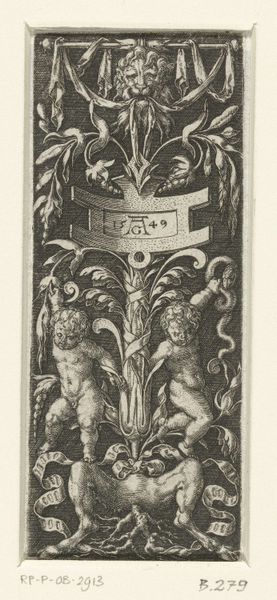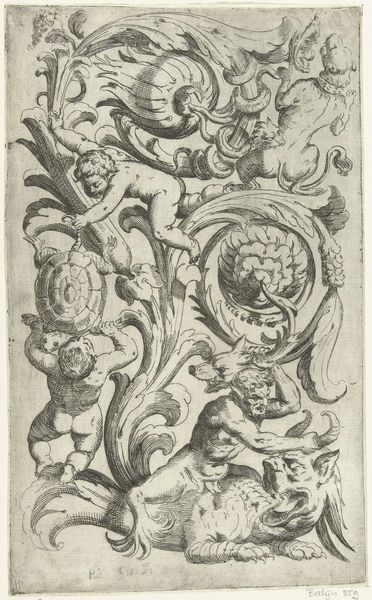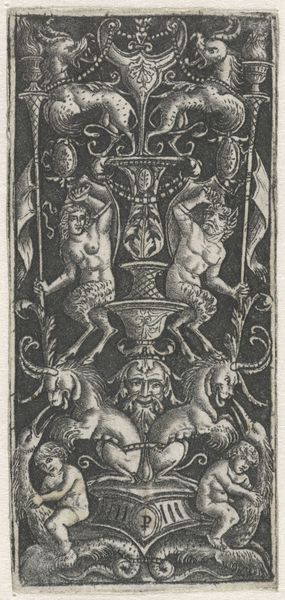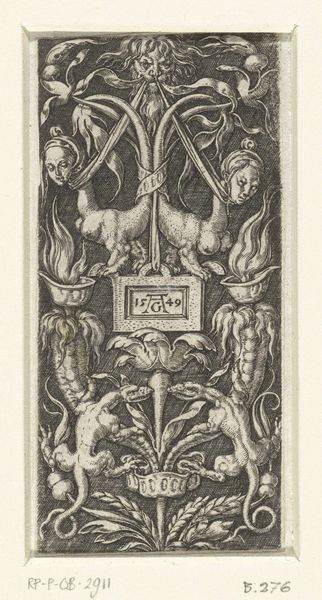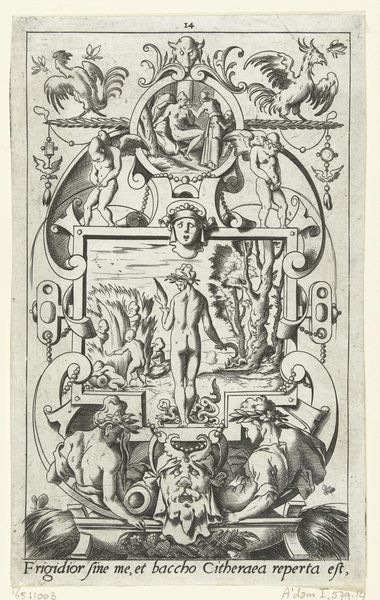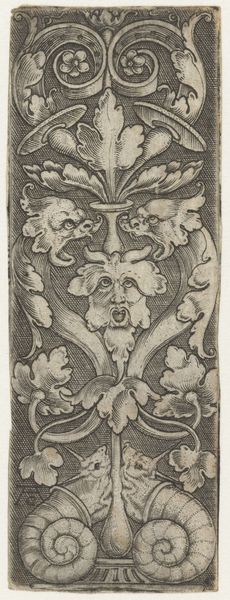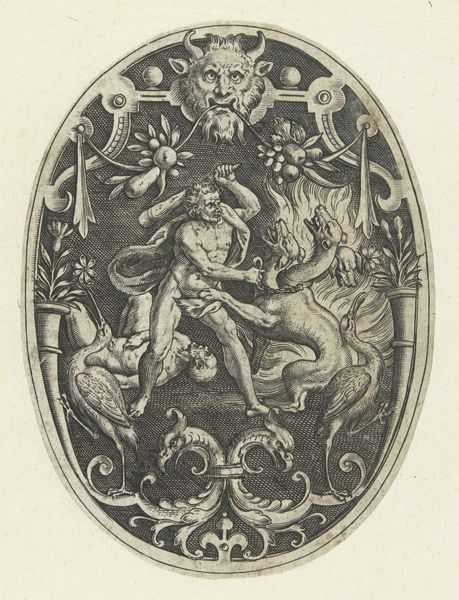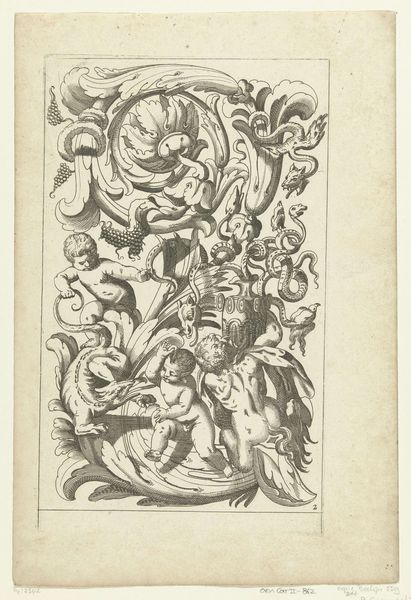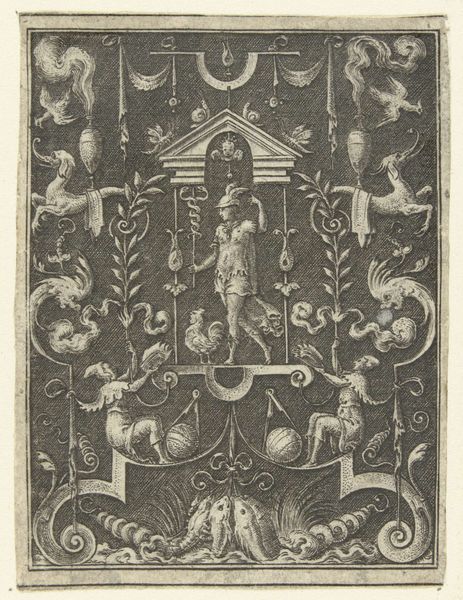
print, intaglio, engraving
#
allegory
#
pen drawing
# print
#
intaglio
#
old engraving style
#
figuration
#
11_renaissance
#
line
#
northern-renaissance
#
engraving
Dimensions: height 105 mm, width 40 mm
Copyright: Rijks Museum: Open Domain
Curator: Today, we’re observing "Vlakdecoratie met twee kinderen," a 16th or 17th-century engraving located here at the Rijksmuseum and created by an anonymous artist. Editor: It strikes me as rather whimsical. The composition, vertical and almost rigidly symmetrical, contains these pockets of sheer delight – cherubic figures, snakes, foliage, all rendered in crisp detail. Curator: Indeed. The engraving displays an assertive use of line, characteristic of Northern Renaissance printmaking, with each form meticulously delineated. The texture created by the varied density of lines produces an image that's both visually complex and structurally sound. Editor: Those cherubs immediately caught my eye. Their chubby forms contrast the leanness of the other details. One clutches a snake, the other some floral arrangement. Do you think the snake is a stand-in for evil or deception? Curator: One might consider that angle. The iconography suggests the themes of innocence versus worldly knowledge and perhaps even a vanitas-style meditation on ephemeral beauty. But also, consider the image in terms of decorative plane. It probably belongs as an architectural element – a visual syntax for ornament within a more extensive spatial environment. Editor: The cartouche bearing the date 1549 suggests that is meant to mark something. Its integration into the foliage speaks to that blending of meaning and design that I often find very resonant, and rather lovely, to behold in such works. Curator: Certainly. It synthesizes line and volume within a tightly organized space, thus giving us both decorative delight and conceptual tension. Editor: Absolutely. These juxtapositions of symbols—serpents and babes, ribbons and beasts—spark intrigue and provoke a re-evaluation of common beliefs through memorable graphic forms. Curator: It is, I believe, in that very tension where its power resides. It provides visual stimulation while subtly probing one's own intellectual assumptions. Editor: In that sense, it is very typical of artwork created during the period of The Reformation, where everything about culture seemed rife with anxiety and uncertainty. Curator: I agree. I now look at this piece, not only as an organized visual structure but also a record of this early era of ideological transformation. Editor: It is a powerful intersection indeed—art and the society.
Comments
No comments
Be the first to comment and join the conversation on the ultimate creative platform.

